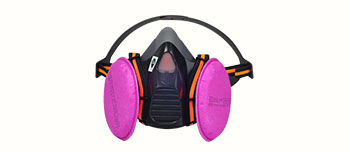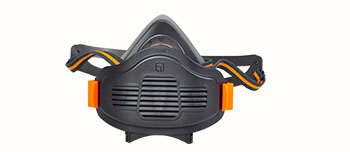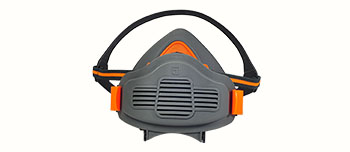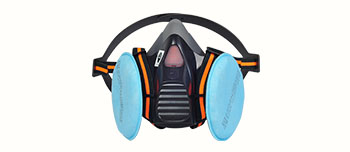Welding, as an indispensable processing technology in modern industry, not only creates value, but also generates a large amount of harmful substances that pose a serious threat to the health of workers. Among them, welding fumes are the most significant and common source of health hazards. Therefore, choosing efficient personal protective equipment is crucial, and KN100 level masks are a solid shield for welders to protect their respiratory health in smoke and dust.
Understanding the 'true face' of welding fumes
The welding process generates a large amount of complex welding fumes, which are mainly composed of small particles such as metal oxides, fluorides, silicates, etc. Its characteristics can be summarized as follows:
Extremely fine particles: The particle size of welding fumes is usually between 0.01-1 microns, belonging to the category of inhalable particulate matter (PM10) and fine particulate matter (PM2.5), or even smaller. These micron sized and submicron sized particles can easily break through the barriers of the human nasal cavity and throat, reach the deepest alveoli in the lungs, and may enter the bloodstream, affecting various organs of the human body.
Complex and toxic components: Smoke and dust contain various metal particles such as manganese, chromium, nickel, lead, etc. Long term inhalation may cause "metal heat", neurological damage, and even increase the risk of cancer. Especially when using certain alloy welding materials or flux cored wires, the harmful substances produced are more toxic.

High concentration and strong diffusion: In poorly ventilated work environments, welding fumes can quickly accumulate, causing a sharp increase in pollutant concentration in the work area, reducing visibility and seriously endangering workers' health.
What does the KN100 mask mean?
KN "is the mask grade specified in Chinese standard GB2626-2019 for protecting against non oily particulate matter. The following number "100" represents its filtering efficiency.
KN95: The filtration efficiency for non oily particles is ≥ 95%.
KN100: The filtration efficiency for non oily particles is ≥ 99.97%.
This means that the KN100 mask can filter out almost all (over 99.97%) of fine particles, including the deadliest and smallest welding fumes. Compared to the more common KN95 mask, KN100 provides an order of magnitude higher level of protection.
Why do welders need efficient protection at KN100 level?
The need to deal with ultrafine particles: The core hazard of welding fumes is their extremely fine particle size. Ordinary masks or low-level protective masks cannot effectively block these particles. The ultra-high filtration efficiency of KN100 is the key to ensuring that the lungs of welders are not invaded by these "invisible killers".
Minimizing the risk of occupational diseases to the greatest extent possible: Long term inhalation of welding fumes can lead to serious occupational diseases such as welder's pneumoconiosis, manganese poisoning, and metal smoke and heat. These diseases are often irreversible, seriously damaging labor capacity and even endangering life. Wearing KN100 masks can greatly reduce the inhalation of harmful substances from the source, and is one of the most effective and direct means to prevent these occupational diseases.
 English
English





